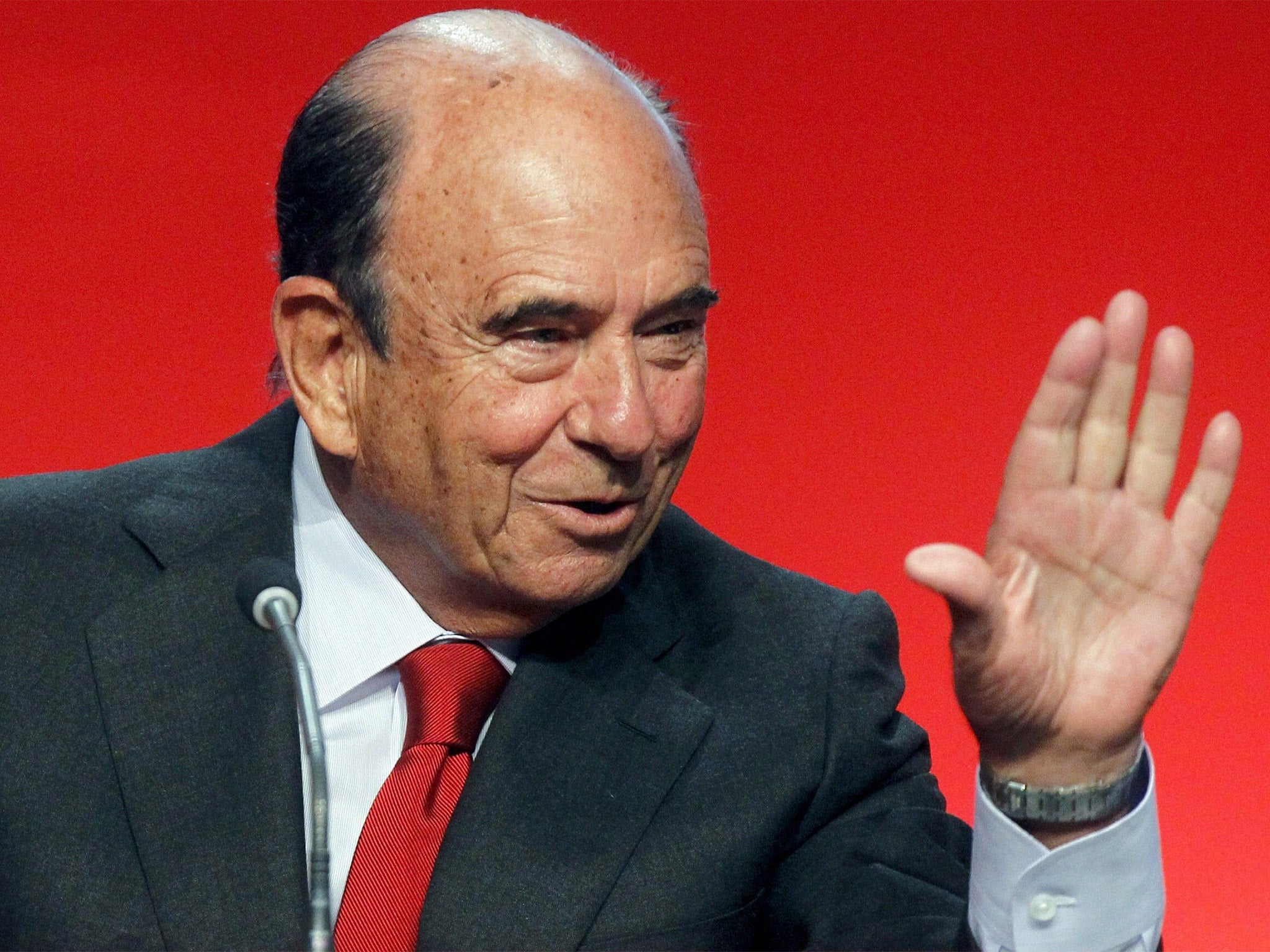Emilio Botin: Businessman who transformed Banco Santander from a middle-ranking Spanish firm into a global financial giant

Emilio Botin, who has died of a heart attack at the age of 79, built Banco Santander from a small regional operation in Spain into a global financial giant.
With his shrewd eye for a deal and apparently boundless energy, along with a wide circle of political contacts, he was Spain's most influential business leader – indeed, arguably its most powerful individual. Once, at an election rally, the Socialist leader Felipe Gonzalez urged his supporters to be sure to cast their votes: on polling day, he told them, their individual voices became as powerful as Emilio Botin's.
Botin shook up Spanish banking with a vigorous campaign to attract depositors in 1989, forcing his rivals to compete on price, and bought troubled Banesto in 1994 to create Spain's biggest bank. He expanded forcefully into Latin America, which is now a cornerstone of the empire's profitability. By the end of last year Santander's assets stood at around 1.1 trillion euros – roughly the size of Spain's GDP.
Until 2004 he was better known in Britain as the father-in-law of the golfer Seve Ballesteros, who was married to his daughter Carmen. Then Santander bought Abbey National, making it the second largest bank in the eurozone by market capitalisation. It now has 102 million customers and more than 186,000 employees. As Botin once put it: "The ambition is to be second to none." Alliance & Leicester and Bradford & Bingley also became part of the empire – as a Spanish commentator observed after the acquisition of Abbey National, "Botin likes to gobble a bank every few years to keep going: grow, grow, is his watchword."
His career was not without controversy: he and 11 relatives were investigated in 2011 for alleged income and wealth tax evasion via Swiss bank accounts, but the investigation was dropped in 2012. Family lawyers said the accounts derived from assets Botin's father held outside Spain and that the family had paid back about 200 million euros.
He made sure that Santander remained to some extent the family firm. Although take-overs and flotations reduced the family stake to less than 3 per cent, Botin installed three of his children on the board. There could be little quibbling with the presence of his daughter Ana Patricia, a formidable banker in her own right, but his sons Javier and Emilio IV were also given seats, while two nephews were made directors of the Santander-owned Bankinter.
When Santander bought Abbey National, Vince Cable commented, "Santander has a system of management not compatible with the demanding approach to risk management of British banks, which needs plenty of external challenges from independent directors." Four family members on the board was "extraordinarily large" for such a small shareholding, he said.
Botin was born in Santander on Spain's northern coast in 1934 into a banking dynasty; his father ran Banco Santander before him, and his grandfather and great-grandfather were bankers. He went to a Jesuit boarding school in Gijon then studied law at the University of Valladolid and economics at the University of Deusto in Bilbao.
In 1986, when he was 52, his father stepped down at the age of 84 and he took over as president of Santander, which until then had enjoyed a comfortable existence in the middle ranks of Spanish business. In a frenzy of take-overs and mergers he eliminated domestic competition in the banking sector, as well as feasting himself on Spain's construction, energy and telecoms sectors when they were privatised in the 1990s. His acumen was legendary: he sold off Santander's 1,200 portfolio of Spanish palaces for €4bn just before the property market crashed.
He took great care to be as close as he could to political power. He helped launch the career of Jose Maria Aznar, Spain's prime minister from 1996 until 2004. But when Aznar was replaced by the Socialist Jose Luis Rodriguez Zapatero, Botin was the first to congratulate him on his surprise win, an endorsement which steadied the nervous Spanish markets. Luis de Guindos, Spain's finance minister, said Botin's support had been important in the government's decision not to negotiate a full bail-out with its international creditors in 2012. Botin telephoned him, he recalled, and said, "You know what you have to do and I will back you."
He rarely gave interviews – requests tended to be met with a hand-out of his most recent speech to shareholders. Santander City, his offices outside Madrid, into which he moved in 2008, were luxuriously appointed – his own office suite was 5,000 square feet in area, and the complex houses a gym, four tennis courts, a jogging circuit and an 18-hole golf course, as well as what is thought to be the largest workplace creche in Europe. When appearing on behalf of Santander, employees were told to wear the company colour, red – ties for the men, scarves for the women.
Botin was an enthusiastic golfer, as well as a keen hunter. He is survived by his six children – Ana Patricia, who became chief executive of Santander in 2010, will take over as chairman – and his wife Paloma, the Marquise of O'Shea, a pianist and philanthropist.
CHRIS MAUME
Emilio Botin-Sanz de Sautuola y Garcia de los Rios, banker: born Santander 1 October 1934; married Paloma O'Shea Artiñano, 1st Marquise of O'Shea (four daughters and two sons); died 9 September 2014.
Join our commenting forum
Join thought-provoking conversations, follow other Independent readers and see their replies
Comments